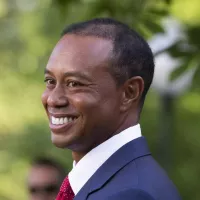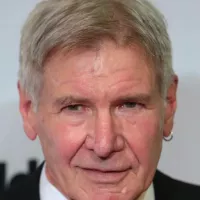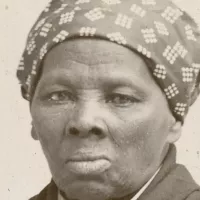The Open Championship, also known as The Open or British Open, holds the title of the world's oldest golf tournament, established in 1860. Organized by The R&A, this prestigious tournament was initially hosted annually at Scotland's Prestwick Golf Club. Over time, it adopted a rotational system, taking place across various coastal links golf courses within the United Kingdom.
1901: Formation of the PGA
In 1901, the PGA was formed, largely due to the efforts of the Great Triumvirate, which helped in promoting professional golf and The Open.
1906: Turnberry's Establishment
Turnberry was established in 1906.
1907: First Non-British Winner
Arnaud Massy from France made history in 1907 by becoming the first non-British golfer to win The Open Championship.
1907: Introduction of qualifying for The Open
In 1907, qualifying was introduced for the Open Championship, requiring all players to go through the qualification process.
1909: Royal Cinque Ports Hosts The Open
Royal Cinque Ports Golf Club hosted The Open Championship for the first time in 1909.
1911: Largest Field Size Recorded
The 1911 Open Championship saw the largest field size in the tournament's history, with 226 players competing.
1914: Great Triumvirate impact on The Open
By 1914, the Great Triumvirate had significantly influenced the popularity of The Open, being responsible for forming the PGA in 1901 and raising the standards of professional golf.
1914: Domination of the Great Triumvirate
The period between 1894 and 1914 was marked by the dominance of the "Great Triumvirate": Harry Vardon, John Henry Taylor, and James Braid. They collectively won 16 out of 21 Open Championships during this time.
1920: Final Open Championship at Musselburgh Links
The 1920 Open Championship marked the last time the tournament was held at the 9-hole Musselburgh Links course. The course had been used because it was associated with the Honourable Company of Edinburgh Golfers, one of the organizers of The Open from 1872 to 1920.
1920: Royal Cinque Ports Hosts The Open for the Second Time
The Open Championship was held at Royal Cinque Ports Golf Club for the second time in 1920.
1921: U.S.-Based Players Participate and Jock Hutchison's Victory
Eleven U.S.-based golfers, including five British-born players who had emigrated to America, participated in the 1921 Open Championship. Jock Hutchison, a naturalized American citizen, won the tournament in his birthplace of St Andrews. A match between the American and British professional teams prior to the tournament is considered a precursor to the Ryder Cup.
1922: Royal Birkdale Golf Club's Redesign
Royal Birkdale Golf Club underwent an extensive redesign in 1922, orchestrated by Fred Hawtree and JH Taylor, resulting in its present-day layout. The course is renowned for its distinctive sand dunes that flank the fairways.
1922: Walter Hagen's First Open Championship Victory
Walter Hagen became the first American-born golfer to win The Open Championship in 1922, marking the beginning of an era of American dominance in the tournament.
1923: Start of American Dominance
From 1923 to 1933, American-based golfers, including British-born players who had emigrated to the U.S., won The Open Championship every year.
1923: Royal Troon Golf Club's First Open Championship
Royal Troon Golf Club hosted The Open Championship for the first time in 1923, stepping in for Muirfield amidst uncertainty regarding the Honourable Company of Edinburgh Golfers' willingness to host the event.
1923: Troon Hosts The Open for the First Time
Troon Golf Club was added to The Open Championship rota and hosted the tournament for the first time in 1923.
1925: Prestwick Golf Club Removed from The Open Rota
Due to severe overcrowding issues experienced at Prestwick Golf Club during the 1925 Open Championship, the course was deemed unsuitable for hosting the tournament and was replaced by Carnoustie Golf Links as the third Scottish venue.
1925: Prestwick Deemed Unsuitable, Leading to Course Changes
Following overcrowding problems at the 1925 Open Championship at Prestwick Golf Club, it was determined that the course was no longer suitable due to its short length, numerous blind shots, and inability to accommodate the increasing number of spectators. This led to the addition of new courses to the Open Championship rota.
1925: Standardization of Tournament Format and Cut
Prior to 1925, The Open Championship experimented with different formats, including cuts after 36 holes and qualifying events. The largest field was 226 players in 1911, sometimes requiring the tournament to be played over four days.
1926: Standardization of Tournament Format
In 1926, The Open Championship adopted a standardized format, featuring three days of play: 18 holes on days 1 and 2, and 36 holes on day 3. Qualifying rounds and a cut were also implemented.
1926: Royal Lytham & St Annes Hosts The Open for the First Time
Royal Lytham & St Annes Golf Club joined The Open Championship rota and hosted the tournament for the first time in 1926.
1931: Carnoustie Hosts The Open for the First Time
Carnoustie Golf Links hosted The Open Championship for the first time in 1931, replacing Prestwick on the rota.
1933: End of American Dominance
The streak of American victories in The Open Championship ended in 1933, marking a shift in the balance of power in the tournament.
1934: English Dominance Begins
From 1934 to 1939, English golfers won The Open Championship every year.
1938: Royal Cinque Ports Removed from Rota
After flooding prevented Royal Cinque Ports from hosting The Open Championship in both 1938 and 1949, it was removed from the tournament's rota.
1938: Open Championship Relocated from Royal Cinque Ports to Royal St George's
Originally scheduled to be held at Royal Cinque Ports Golf Club, the 1938 Open Championship had to be moved to Royal St George's Golf Club. This relocation was necessitated by unusually high tides that flooded the Royal Cinque Ports course.
1939: End of English Dominance
The run of English victories in The Open Championship concluded in 1939.
1947: Frank Stranahan as Low Amateur
Frank Stranahan achieved the distinction of being the low amateur at The Open Championship in 1947.
1948: Henry Cotton's Third Open Championship Win
English golfer Henry Cotton secured his third Open Championship victory in 1948.
1949: Open Championship Moved from Royal Cinque Ports to Royal St George's
Similar to the 1938 event, the 1949 Open Championship was planned to take place at Royal Cinque Ports Golf Club but was moved to Royal St George's Golf Club due to the course being inundated by exceptionally high tides.
1949: Silver Medal for Leading Amateur
Since 1949, the silver medal has been awarded to the amateur golfer who finishes The Open Championship with the lowest score, provided they complete all 72 holes.
1949: Last Open Championship at Royal St George's Golf Club for 32 Years
The 1949 Open Championship was the final time the tournament was held at Royal St George's Golf Club for a period of 32 years.
1949: Post-World War II Return and Sam Snead's Victory
The Open Championship resumed after World War II at St Andrews, with American golfer Sam Snead emerging victorious. This year also saw flooding prevent Royal Cinque Ports from hosting the tournament, which had also happened in 1938, ultimately leading to its removal from the rota.
1952: Bobby Locke's Third Open Championship Win
South African golfer Bobby Locke won his third Open Championship in 1952.
1953: Ben Hogan's Triple Crown Victory
Ben Hogan achieved the coveted "Triple Crown" by winning the Masters Tournament, the U.S. Open, and The Open Championship in 1953. His historic accomplishment was celebrated with a ticker-tape parade in New York City upon his return.
1954: Peter Thomson's First Open Championship Victory
Australian golfer Peter Thomson won his first Open Championship in 1954, marking the beginning of his dominant run in the tournament.
1955: BBC Begins Broadcasting The Open
The BBC's inaugural broadcast of The Open Championship took place in 1955.
1957: Leaders After 36 Holes Tee Off Last
Beginning in 1957, The Open Championship implemented the practice of having the leaders after 36 holes tee off last in the subsequent rounds, adding to the excitement and strategic elements of the tournament.
1957: Bobby Locke's Fourth Open Championship Win
Bobby Locke secured his fourth Open Championship victory in 1957.
1958: Peter Thomson's Fourth Open Championship Victory
Peter Thomson claimed his fourth Open Championship title in 1958.
1959: Gary Player's First Open Championship Victory
South African golfer Gary Player, at a young age, won his first Open Championship in 1959.
1960: Arnold Palmer's Quest for the Triple Crown
Arnold Palmer, having already won the Masters and U.S. Open, competed in The Open Championship in an attempt to match Ben Hogan's 1953 feat of winning all three majors in a single year. Despite finishing second to Kel Nagle, Palmer's participation and subsequent victories in the tournament significantly raised the profile of The Open Championship in the United States.
1961: Arnold Palmer's First Open Championship Victory
American golfer Arnold Palmer secured his first Open Championship victory in 1961, captivating audiences on both sides of the Atlantic and further increasing the tournament's popularity in the United States.
1961: Peter Alliss Joins BBC Open Coverage
In 1961, Peter Alliss became part of the BBC's Open Championship broadcasting team.
1962: Arnold Palmer's Second Consecutive Open Championship Victory
Arnold Palmer successfully defended his Open Championship title in 1962, solidifying his status as a global golf icon and further popularizing the tournament among American audiences.
1962: ABC Starts Showing The Open
In 1962, ABC began airing taped highlights of The Open Championship on their show "Wide World of Sports."
1965: Peter Thomson's Fifth Open Championship Victory
Peter Thomson achieved his fifth and final Open Championship victory in 1965.
1966: Jack Nicklaus's First Open Championship Victory
Jack Nicklaus won his first Open Championship in 1966, marking the start of his pursuit of the Claret Jug. This year also saw The Open Championship adopt a four-day format, which it has maintained ever since (although the days were Wednesday to Saturday until 1980).
1966: The Open Championship Adopts Four-Day Format
The Open Championship transitioned to a four-day format in 1966, enhancing the tournament's prestige and providing players with a more comprehensive test of their abilities. The tournament was held from Wednesday to Saturday until 1980.
1967: Roberto De Vicenzo's engraving oversight
In 1967, Open Champion Roberto De Vicenzo returned the Claret Jug without having his name engraved on it. This led to the winner's name being engraved on the trophy before presentation from then on.
1969: PGA Championship Moved to August
In 1969, the PGA Championship was moved to August, eliminating its scheduling conflict with The Open Championship and contributing to the establishment of the modern majors system.
1970: Jack Nicklaus's Second Open Championship Victory
Jack Nicklaus secured his second Open Championship title in 1970, further cementing his legacy as one of golf's greats.
1971: Lee Trevino's First Open Championship Victory
American golfer Lee Trevino won his first Open Championship in 1971.
1972: Bronze Medals for Amateurs in the Final Round
Beginning in 1972, The Open Championship introduced the practice of awarding bronze medals to all amateurs who successfully competed in the final round, in addition to the silver medal given to the top-performing amateur.
1972: The Open joins European Tour
In 1972, the Open Championship became an event on the newly formed European Tour.
1972: Lee Trevino's Second Consecutive Open Championship Victory
Lee Trevino successfully defended his Open Championship title in 1972, denying Jack Nicklaus a calendar year Grand Slam in the process.
1974: Standardization of Golf Ball Size
In 1974, The Open Championship adopted the use of the larger golf ball, aligning with other major championships and reflecting the evolving standards in golf equipment.
1975: Tom Watson's First Open Championship Victory
American golfer Tom Watson won his first Open Championship in 1975, beginning his reign as one of the tournament's most dominant players.
1975: Establishment of Modern Majors and The Open Championship's Format
By 1975, the concept of the modern majors was well-established, with The Open Championship being chronologically the fourth and final major of the year following the PGA Championship's move to August in 1969. The Open had adopted a format similar to the present day, with the leaders after 36 holes teeing off last (since 1957), all players using the larger ball (since 1974), and the tournament played over four days (since 1966). The field now consistently featured the world's top golfers.
1976: Seve Ballesteros's Breakthrough Performance
A 19-year-old Seve Ballesteros made a significant impact on the golfing world with his second-place finish in the 1976 Open Championship.
1976: Women's British Open inception
In 1976, the Women's British Open was established, which would later be renamed to the Women's Open.
1977: Duel in the Sun between Jack Nicklaus and Tom Watson
The 2016 duel between Henrik Stenson and Phil Mickelson was compared to the 1977 Duel in the Sun between Jack Nicklaus and Tom Watson.
1977: Turnberry's Open Championship Debut
Turnberry hosted The Open Championship for the first time in 1977, an event that gained iconic status for the "Duel in the Sun" between Tom Watson and Jack Nicklaus.
1977: Turnberry's First Time Hosting and Tom Watson's Second Victory
Turnberry hosted The Open Championship for the first time in 1977. Tom Watson clinched his second Open Championship title after a memorable duel with Jack Nicklaus that went down to the final shot.
1978: Jack Nicklaus's Third Open Championship Victory
Jack Nicklaus claimed his third and final Open Championship victory in 1978.
1978: Alliss Becomes Lead Commentator
Peter Alliss took on the role of lead commentator for the BBC's Open Championship coverage in 1978.
1979: Seve Ballesteros's First Open Championship Victory
Seve Ballesteros became the first continental European since Arnaud Massy in 1907 to win The Open Championship with his victory in 1979.
1980: Tom Watson's Third Open Championship Victory
Tom Watson secured his third Open Championship victory in 1980, solidifying his reputation as a master of links golf.
1980: Shift in Tournament Days
Until 1980, the four days of The Open Championship took place from Wednesday to Saturday.
1981: Royal St George's Golf Club Returns to The Open Rota
Following a 32-year hiatus, Royal St George's Golf Club was reinstated as an Open Championship venue in 1981. This return was facilitated by significant course improvements, including the reconstruction of three holes, tee modifications on two others, and enhanced road access.
1982: Tom Watson's Fourth Open Championship Victory
Tom Watson continued his dominance with his fourth Open Championship title in 1982.
1983: Tom Watson's Fifth Open Championship Victory
Tom Watson achieved his fifth and final Open Championship victory in 1983, placing him among the tournament's all-time greats. Only Harry Vardon, with six victories, has won more Open Championships.
1984: Seve Ballesteros's Second Open Championship Victory
Seve Ballesteros secured his second Open Championship title in 1984, confirming his status as one of the game's most exciting talents.
1986: Greg Norman's First Open Championship Victory
Australian golfer Greg Norman claimed his first Open Championship victory in 1986.
1987: Nick Faldo's First Open Championship Victory
English golfer Nick Faldo won his first Open Championship in 1987, marking the start of his successful run in the tournament.
1987: Senior Open inception
In 1987, the R&A started the Senior Open, the over-50s equivalent of the Open.
1988: Seve Ballesteros's Third Open Championship Victory
Seve Ballesteros claimed his third and final Open Championship victory in 1988, solidifying his legacy as a legend of the game.
1990: Nick Faldo's Second Open Championship Victory
Nick Faldo secured his second Open Championship victory in 1990, further cementing his place among the game's elite players.
1992: Nick Faldo's Third Open Championship Victory
Nick Faldo achieved his third and final Open Championship victory in 1992, solidifying his status as one of England's most successful golfers.
1993: Greg Norman's Second Open Championship Victory
Greg Norman won his second Open Championship title in 1993, adding to his impressive list of accomplishments in golf.
1994: Every year between 1994 and 2004 had a first-time winner
In 1994, the Open Championship saw the beginning of a decade-long trend where every year had a first-time winner, lasting until 2004.
1995: Open prize money included in PGA Tour
In 1995, prize money from the Open Championship was included in the PGA Tour official money list for the first time, leading to an increase in American entries. All previous PGA Tour seasons were retroactively adjusted to include the Open in official money and win statistics.
1998: Good Friday Agreement Paves the Way for Royal Portrush's Return
The signing of the Good Friday Agreement in 1998 significantly eased tensions in Northern Ireland. This development, combined with the successful hosting of the Irish Open, paved the way for Royal Portrush to eventually return as an Open Championship venue.
1999: Carnoustie Golf Links: Modifications and a Memorable Finish
Carnoustie Golf Links underwent modifications in preparation for the 1999 Open Championship. The course, renowned for its difficulty, particularly the challenging final three holes, became etched in golfing history due to Jean van de Velde's dramatic triple bogey on the 18th hole, costing him the championship.
1999: Jean van de Velde's triple bogey and Paul Lawrie's win
In 1999, at the Open Championship held at Carnoustie, Jean van de Velde had a three-shot lead teeing off on the final hole but ended up with a triple bogey. Paul Lawrie, ranked 241st in the world, won in a playoff after being 10 strokes behind going into the final round—a record comeback for all majors.
2000: Tiger Woods wins and sets record
In 2000, Tiger Woods won the Open Championship by a post-war record 8 strokes, becoming the youngest player to win the career Grand Slam at age 24.
2002: Tiger Woods' bid to emulate Ben Hogan
In 2002, after winning the Masters and U.S. Open, Tiger Woods attempted to emulate Ben Hogan by winning the Open in the same year. However, his bid failed with his worst career round up to that time, an 81 (+10) in cold, gusty rain.
2003: Ben Curtis wins the Open
In 2003, Ben Curtis, ranked 396th in the world, won the Open Championship, continuing the trend of unheralded champions.
2003: TNT Takes Over Early Round Coverage
TNT became the rights holder for early-round coverage of The Open Championship in the United States in 2003, replacing ESPN.
2004: Todd Hamilton wins the Open
In 2004, Todd Hamilton, ranked 56th in the world, won the Open Championship, marking another year of a first-time winner during the 1994-2004 period.
2005: Tiger Woods wins the Open
In 2005, Tiger Woods won the Open Championship again, adding to his career total.
2006: ESPN Takes Over ABC Sports Coverage
ESPN, which is co-owned with ABC, took over responsibility for ABC's sports coverage in 2006.
2006: Tiger Woods wins back-to-back
In 2006, Tiger Woods won the Open Championship for the second consecutive year, bringing his total to three wins.
2006: Royal Liverpool's Return and Tiger Woods' Victory
Royal Liverpool Golf Club rejoined the Open Championship rota in 2006 after a 39-year gap. The course underwent renovations including changes to tees, bunkers, and greens. Notably, Tiger Woods emerged victorious in this tournament, employing his driver only once throughout the competition.
2007: Pádraig Harrington wins the Open
In 2007, Irish golfer Pádraig Harrington won the Open Championship.
2007: Senior Open name change
In 2007, the Senior Open dropped the word 'British' from its title.
2008: Pádraig Harrington wins back-to-back
In 2008, Pádraig Harrington won the Open Championship for the second consecutive year.
2009: Tom Watson's near victory and Stewart Cink's win
In 2009, 59-year-old Tom Watson led the Open Championship through 71 holes and needed just a par on the last hole to become the oldest ever winner of a major. However, he bogeyed, setting up a four-hole playoff, which he lost to Stewart Cink.
2010: ESPN Gains Exclusive Rights to The Open
ESPN secured exclusive broadcasting rights to all four days of The Open Championship in 2010, marking the first time a golf major was exclusively aired on pay television in the United States.
2010: R&A Standardizes Tournament Name to "The Open"
In 2010, The R&A implemented contractual terms in their media agreements, similar to those used by the Masters Tournament, mandating that rights holders refer to the tournament exclusively as "The Open." This ended the common practice of some non-British broadcasters using the term "British Open."
2011: Darren Clarke wins the Open
In 2011, Darren Clarke fulfilled a lifelong ambition by winning the Open Championship.
2012: Ernie Els wins the Open
In 2012, South African golfer Ernie Els won the Open Championship, adding to his previous win in 2002.
2012: BBC's Golf Portfolio Shrinks
The BBC's golf coverage diminished in 2012 with the loss of broadcasting rights for the Scottish Open and BMW PGA Championship, leaving only The Open and the final two days of the Masters.
2013: Phil Mickelson wins the Open
In 2013, American Phil Mickelson won his first Open Championship and his fifth major title.
2014: Donald Trump Acquires Turnberry
Donald Trump purchased Turnberry in 2014 and invested heavily in renovating the course.
2015: Jordan Spieth's bid and Zach Johnson's win
In 2015, Jordan Spieth arrived at the Open having already won the year's Masters and U.S. Open. He finished tied for fourth, while Zach Johnson became the champion.
2015: Sky Secures Exclusive UK Open Rights
Sky Sports obtained exclusive broadcasting rights to The Open Championship in the UK in 2015, ending the BBC's run as the tournament's primary broadcaster.
2016: BBC Shows Open Highlights
Despite no longer being the primary rights holder, the BBC provided highlights coverage of The Open Championship in 2016.
2016: Henrik Stenson's duel with Phil Mickelson
In 2016, Henrik Stenson won the Open Championship after an epic duel with Phil Mickelson. Stenson's score of 264 (-20) set a record for the Open and major championships.
2016: Muirfield Briefly Removed from The Open Rota
In 2016, Muirfield was temporarily excluded from the rotation of Open Championship venues. This decision stemmed from the club's lack of female members at the time.
2016: NBC Gets One-Year Rights Deal
NBC secured a one-year deal for the broadcasting rights to The Open Championship in 2016, acquiring them from ESPN.
2016: Prize Money in Pounds Sterling
Until 2016, the prize money for The Open Championship was consistently declared and paid in pounds sterling (£).
2017: Jordan Spieth wins the Open
In 2017, Jordan Spieth won the Open Championship at Royal Birkdale.
2017: R&A takes over Women's Open
In 2017, the R&A began running the Women's Open, seen as the female equivalent to the Open Championship.
2017: R&A's stance on the name 'The Open'
In 2017, the R&A emphasized the priority to eradicate the term 'British Open' and establish a unified brand name 'The Open' worldwide. This stance attracted criticism but was supported by tournament partners and media.
2017: NBC Wins Open Rights
NBC acquired the broadcasting rights to The Open Championship starting in 2017, marking their return to covering a golf major.
2017: Shift to US Dollars for Prize Money
Recognizing the widespread adoption of the US dollar ($) as the standard currency for golf prize money, The Open Championship switched to awarding its purse in US dollars starting in 2017.
November 2018: NBC's Parent Company Acquires Sky
In November 2018, the parent company of NBC, the U.S. rights holder for The Open Championship, completed the acquisition of Sky, the U.K. rights holder. This consolidation brought the media rights for the tournament in the two largest markets under the ownership of a single entity, although production remained separate under different subsidiaries.
2018: Francesco Molinari wins the Open
In 2018, Francesco Molinari won the Open Championship at Carnoustie by two shots, becoming the first Italian major winner.
2018: High Strength of Field Rating
In 2018, The Open Championship received a strength of field rating of 902 out of a possible 1000, as assessed by the Official World Golf Ranking (OWGR). This score was only surpassed by the PGA Championship, a tournament known for actively pursuing a high strength of field rating.
2018: Open Coverage Slightly Longer Than 2019
The total coverage time for The Open Championship in 2018 was 30 minutes longer than in 2019, with a difference attributed to a slightly shorter Sunday broadcast on NBC in 2019.
2019: Royal Portrush's Return to The Open Rota
In 2019, Royal Portrush Golf Club once again hosted The Open Championship after a lengthy absence. Leading up to the event, the course underwent significant alterations, including the replacement of the 17th and 18th holes. These changes created space to accommodate spectators and corporate hospitality, meeting the requirements of a modern major golf tournament.
2019: Shane Lowry wins the Open
In 2019, Shane Lowry won the Open Championship at Royal Portrush, becoming the second champion from the Republic of Ireland.
2019: PGA Championship Schedule Change
In 2019, the PGA Championship moved to May, resulting in The Open Championship becoming the fourth and final major tournament of the year.
2019: Publication of The 148th Open 2019 Media Guide
The 148th Open 2019 Media Guide, a comprehensive source of information about the tournament's history and other aspects, was published in 2019.
2020: Women's Open name change
In 2020, as part of a sponsorship deal with AIG, the Women's British Open was officially renamed to the Women's Open.
2020: Open Championship cancelled due to COVID-19
In 2020, the Open Championship was cancelled because of the COVID-19 pandemic. It was the first cancellation since World War II.
January 2021: R&A's Decision on Turnberry
On January 11, 2021, in the wake of the 2021 United States Capitol attack the previous week, the R&A announced that it would not be staging The Open Championship at Turnberry for the foreseeable future.
2021: Royal St George's hosted the Open
In 2021, Royal St George's hosted the Open Championship as a rescheduling from the cancelled 2020 event.
October 2023: Death of Ivor Robson
Ivor Robson, the voice of The Open Championship for 41 years, passed away in October 2023.
2028: NBC's Open Coverage to Continue Through 2028
NBC's broadcasting agreement for The Open Championship is set to continue until 2028.
Mentioned in this timeline

Donald John Trump is an American politician media personality and...

Liverpool is a port city and metropolitan borough located in...

Jordan Spieth is a highly accomplished American professional golfer on...
The National Broadcasting Company NBC is a major American commercial...

Tiger Woods is a highly accomplished American professional golfer considered...

Trinitrotoluene TNT or -trinitrotoluene is a chemical compound C H...
Trending

De'Anthony Melton known as Mr Do Something is a professional basketball player in the NBA currently playing for the Brooklyn...

Harrison Butker is a placekicker for the Kansas City Chiefs in the NFL Drafted in he played college football at...

6 months ago Harrison Ford and Gene Simmons to be honored by Operation Smile for charity.

4 days ago Tim Allen Returns to Stand-Up: Fresno Performance at Warnors Theatre Announced
11 days ago Thailand Faces Severe Floods: Deaths Rise, Evacuations Underway, Drones Aid Relief.
2 months ago Trent McDuffie discusses playing multiple positions and motivates Chiefs before Jaguars game.
Popular
Matt and Ross Duffer known as the Duffer Brothers are...
Aftyn Alyssa Behn is an American politician currently serving as...

Candace Owens is an American conservative political commentator and author...

XXXTentacion born Jahseh Dwayne Ricardo Onfroy was a controversial yet...

Ilhan Omar is an American politician currently serving as the...

Harriet Tubman was a pivotal American abolitionist and social activist...